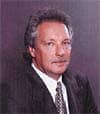Stepping Up to the Challenge
 The Sleep Disordered Breathing Task Force makes strides to educate home care providers, payors, and even CMS.
The Sleep Disordered Breathing Task Force makes strides to educate home care providers, payors, and even CMS.
I am continually challenged by the different perspectives that drive patient care. There are patient-oriented organizations, respiratory therapy organizations, physician organizations (specialty and general), provider organizations (home medical equipment [HME], nursing, home care), disease-specific organizations, manufacturer organizations, and countless others that become involved in every facet of health care.
Each of these organizations provides a specific element of representation—all proclaiming to have their ultimate answer to the never-ending issues of patient care, reimbursement, licensure, protocol, and outcomes. While each may have an answer, none of these have the answer.
My perspective is that of an HME provider, operating a successful 52-year-old respiratory, HME, and pharmacy services business in Cleveland. More than a year ago, the American Association for Homecare (AAHomecare) asked me to chair its Sleep Disordered Breathing Task Force (SDBTF) of the HME/Respiratory Therapy Council. I did not fully understand the complexity of sleep-disordered breathing or the variety of perspectives that I would face.
The genesis of the SDBTF was the HME/RT Council’s discovery last year that many AAHomecare members wanted more direction, information, and advocacy on behalf of treating sleep-disordered breathing. I could relate to their need for more information. I come from an operations and financial background with a deep love of the work we do in our industry. I can generally keep up in a clinical conversation (as long as I only listen), but I had to learn a variety of perspectives and acronyms.
OSA no longer means Overnight Snoring Association to me. I learned that obstructive sleep apnea, although often characterized by snoring, is a serious respiratory condition. Fortunately, treatment modalities, such as continuous positive airway pressure (CPAP) therapy, can restore restful sleep, reduce serious complications of sleep apnea, and improve the quality of life for patients.
NSF is no longer the charge I get from the bank before I have to make payroll. The National Sleep Foundation (NSF) is dedicated to supporting public awareness and education regarding sleep, sleep disorders, and the consequences of sleep deprivation.
The American Sleep Apnea Association (ASAA) is more narrowly focused and is dedicated to reducing injury, disability, and death from sleep apnea through education and public awareness.
The American Academy of Sleep Medicine (AASM) is a professional organization of physicians dedicated to the advancement of sleep medicine and related research. The Academy’s mission is to assure quality care for patients with sleep disorders, promote the advancement of sleep research, and provide public and professional education.
The American Association for Respiratory Care (AARC) is a professional organization of respiratory care professionals designed among other things to enhance professionalism of respiratory care practitioners, improve performance on the job, and broaden the scope of knowledge among professionals.
The Challenge
Given the backdrop of the above acronyms, the first challenge the SDBTF faced was to assemble a group of sleep-disordered breathing home health care leaders that was representative of product manufacturers, industry consultants, and clinicians. The group would discuss issues involving sleep disorders and serve our membership.
It became apparent that the clinicians in our industry were continually being challenged to prove the necessity for OSA therapy, monitor product utilization, determine patient compliance, and provide virtually unlimited clinical and accessory support to improve patient outcomes. While the clinical benefits of patient compliance are anecdotally self-evident, we continue to search for the answer to obtaining the necessary reimbursement for our services.
Through numerous teleconferences and with tremendous support from James Jorkasky, vice president of membership and strategic development for AAHomecare, and Kim Kianka-Roberti, director of meetings and education for AAHomecare, the task force introduced a five-part series of educational audio conferences with experts on sleep-disordered breathing. The SDBTF’s goal was to serve the educational needs of the home care industry’ participating providers, so we made sure the audio conference program topics included diagnosis, treatment, billing, compliance, measuring outcomes, and sleep study services at home. A total of five 90-minute interactive audio conferences were offered providing continuing education units (CEUs).
Waking Legislators
It turned out that simply educating members was not enough. With the help of Asela Cuervo, vice president and general counsel for AAHomecare, the SDBTF has also been active in providing clinical background to the Centers for Medicare & Medicaid Services (CMS). When CMS solicited comments on a national coverage policy for CPAP, many of the clinicians on the task force provided input supporting the diagnostic factors recommending CPAP therapy and showing that additional reimbursement for the many compliance accessories could improve outcomes. Fortunately, in many ways our perspective is similar to that of the NSF, AASM, AARC, and ASAA, but unfortunately, it is not identical.
Finally, the task force has been active in advocating for separate reimbursement for the clinical activities associated with these therapies. Specifically, we believe the following:
• Clinical services/compliance monitoring in relation to many therapies that home health care providers deliver are beneficial to patient outcomes.
• Home health care providers are best qualified to provide these services.
• Payment for services should be unbundled from equipment so greater levels of patient compliance monitoring and clinical services can be provided efficiently and effectively.
The clinical component of compliance is the key to successful outcomes in treating OSA, congestive heart failure, asthma, and numerous other disorders that home health care providers deal with in conjunction with various therapeutic modalities. The difficulty, as we all have experienced, is that we are often viewed as equipment providers.The clinical component is not separated from the reimbursement for the product. This puts financial limits on the extent to which we can commit clinical resources above and beyond the product itself.
Looking Ahead
The clinicians, providers, manufacturers, consultants, physicians, and associations that provide patient care must work together to conduct the research necessary and to support the separate, distinct, and fair compensation for professional services rendered to our patients above and beyond the simple Healthcare Common Procedure Coding System code. We must work together to improve diagnostic resources and evaluations. When you have all these organizations (plus many more) involved and concerned about caring for patients with OSA and other sleep-disordered breathing issues, the protocols and politics can often slow down consensus and progress.
I have been overwhelmed by the expertise and commitment within the health care community to address these issues. The challenge is for all parties to integrate patient interest with self-interest. No doubt the professionals wish to better the quality of life of their patients, but we must match that professional integrity with an acceptable reimbursement mechanism. Without both, our patients will not be fully served.
We have countless projects to be discussed at our meetings. We hope to continue to work more closely with, and expand our relationship to include, other related organizations. We believe that an industry consensus-model protocol should be developed delineating the clinical criteria to promote compliance. The task force will also be discussing the appropriateness and implementation of ambulatory sleep study programs.
We spend nearly a third of our lives sleeping. The professionals in our industry using modern treatment modalities provide great help to those who suffer from sleep disorders. The issues that face us as an industry, both clinically and financially, are challenging and engaging. I continue to find these discussions to be thought-provoking and rewarding. The complexity of issues also reinforces the necessity for broad industry cooperation. I look forward to advances in technology, research, and education to support the clinical setting as well as the reimbursement issues. Then we will provide coordinated great benefit to our patients who suffer from sleep-disordered breathing symptoms.
Joel D. Marx is president and CEO of Medical Service Companies of Oakwood Village, Ohio, a suburb of Cleveland. For more information on SDBTF, contact James Jorkasky at (703)535-1890.




